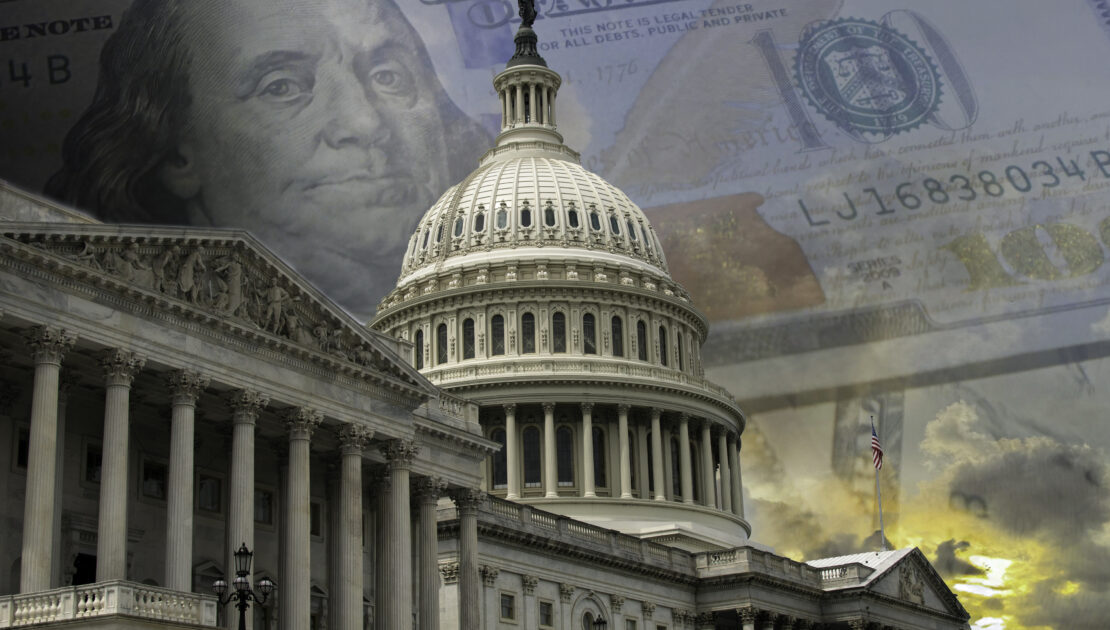On Oct. 1, 2025, the U.S. federal government shut down after congressional leaders failed to reach an agreement on a short-term funding deal. During the shutdown, government agencies must cease all but their most critical functions, paving the way for hundreds of thousands of federal workers to be furloughed and shuttering various national programs and services.
Although the average government shutdown lasts less than a week, 3 of the past 4 shutdowns have surpassed this time frame, with the 2018-19 shutdown extending a record-breaking 35 days. In any case, a shutdown can have far-reaching impacts for employers, potentially affecting various aspects of their operations. This article outlines federal agencies and groups impacted by the shutdown and how their limitations could affect employers across the country.
The DOL
-
- The U.S. Department of Labor (DOL) establishes and enforces federal labor laws to protect employees’ rights, ensure safe working conditions, and maintain fair employment opportunities and benefits. As a whole, this department will scale back enforcement efforts, regulatory actions, technical assistance and compliance audits amid the shutdown. The DOL also comprises multiple federal agencies that will be affected by the shutdown, including the Wage and Hour Division (WHD), the U.S. Bureau of Labor Statistics (BLS), and the Occupational Safety and Health Administration (OSHA).
- The WHD is responsible for investigating and enforcing legislation related to minimum wage, overtime pay and child labor safeguards. During the shutdown, the agency will not open new wage and hour investigations and halt any compliance activities in progress. At this time, it’s unclear whether automatic extensions will apply to due dates for related filings, or if they do, how long the extensions will be. In the event that the shutdown lasts several weeks, employers can also anticipate prolonged delays in ongoing litigation involving the WHD.
- The BLS is the primary fact-finding agency for the federal government as it pertains to the topics of labor economics and statistics. Amid the shutdown, the BLS will suspend all operations, including its monthly reports on the state of the U.S. employment market. This means employers will have reduced visibility of new and emerging employment trends.
- OSHA is responsible for creating and enforcing occupational safety and health requirements. While employers remain subject to applicable OSHA standards during the shutdown, the agency will suspend the majority of its workplace inspections, except for those involving occupational fatalities, catastrophes, and high-risk or imminent danger situations. Based on past government shutdowns, this could reduce workplace inspections by as much as 85%. Although State OSHA Plans can continue to deliver essential functions throughout the shutdown,
The EEOC
-
- The U.S. Equal Employment Opportunity Commission (EEOC), a federal agency responsible for preventing discrimination in the workplace, has the authority to receive, initiate and investigate charges of discrimination filed against employers. Amid the shutdown, individuals can continue to file discrimination charges against employers and request appeals for or reconsideration of open cases.
- However, the EEOC will not be able to initiate new investigations, conduct hearings or mediations, host outreach programs, or respond to questions or concerns regarding open cases. Furthermore, any employment-related litigation that directly involves the EEOC as a party will be suspended, unless the relevant court has not granted a requested continuance.
The NLRB
-
- The National Labor Relations Board (NLRB), a federal agency responsible for enforcing labor laws related to union activities and collective bargaining, has the authority to investigate and prosecute unfair labor practices within the private sector and oversee elections that certify unions as representatives of employees. For most of 2025, the NLRB has operated without a three-member quorum, meaning it lacks the leadership personnel necessary to issue decisions and conduct official business. Even so, day-to-day case handling and union elections have largely pressed on as usual at the regional level.
Nevertheless, amid the shutdown, the NLRB will be unable to process new representation petitions and unfair labor practice charges against employers. It will also halt all administrative litigation and hearings. For pending matters, the agency is expected to adjust current due dates for filings by keeping cases in a state of temporary suspended animation, automatically granting an extension of time equal to the total length of the shutdown.
The DHS
-
- The U.S. Department of Homeland Security safeguards the country against acts of terrorism and similar threats by managing border security, immigration requirements, customs laws and national cybersecurity measures. While the DHS typically remains open during government shutdowns, one of the federal agencies it comprises, namely the U.S. Citizenship and Immigration Services (USCIS), could be impacted due to its reliance on certain DOL operations and funding.
- The USCIS facilitates a substantial portion of the nation’s immigration processes. Because this agency is fee-based, most of its services will remain intact. Yet, the USCIS cannot process or finalize several different types of immigration documents and foreign employment applications (e.g., I-129 H1-B caps, extensions and transfers) without the prior completion of specific labor certification applications and wage determinations by the DOL, which are currently suspended. Consequently, much of this paperwork will be left at a standstill until the shutdown is lifted, thus impacting employers with foreign workers and job applicants.
- In addition, the federal E-Verify system will be temporarily unavailable during the shutdown, eliminating employers’ ability to confirm their new hires’ employment eligibility and proceed with cases already underway. Even so, employers are still required to comply with Form I-9 obligations. As was the case with previous shutdowns, the USCIS is expected to release updated guidance to help employers limit potential liabilities stemming from the E-Verify system being down.
Federal Contractors
-
- While federal contractors aren’t considered government employees, most private companies that perform work for agencies affected by the shutdown will likely be forced to suspend their operations via stop-work orders. Additionally, while many federal employees will receive back pay for the duration of the shutdown, contractors paid based on their time worked will not receive any compensation.
- Considering the government’s increased investment in contractor programs and project outsourcing over the past few years, a growing number of private companies now rely on the government for most of their business. Depending on the length of the shutdown, this could, in turn, lead to more widespread consequences, operational disruptions and financial instability among contractors when compared to prior shutdowns.
Next Steps
As the government shutdown continues, many employers across the country may start to feel its effects in more ways than one. Going forward, employers should stay informed on the latest developments regarding the shutdown and work with trusted legal counsel, employment experts and insurance professionals to respond accordingly.
Contact us for more updates.
Article Published By: Zywave, Inc.

